How to choose a pumice stone for your feet?
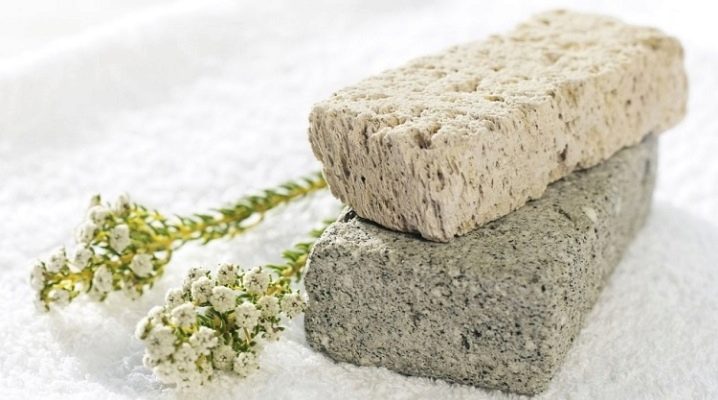
Pumice is considered a popular heel care product. However, few people know what it is and what nuances it has. The material of this article will tell you what it is, what it consists of, what happens and what analogues can be replaced.


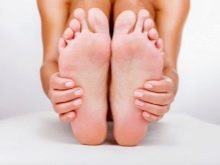
What it is?
Pumice is often called a bar of porous rough material that looks like a sponge. In fact, pumice is nothing but volcanic stone. It is formed by mixing lava with water during a bubbling process to form a porous structure. It is a natural stone with special physical characteristics used in various industries.

The porous mineral foot pumice is quite hard, though by no means heavy. Foamy stone has a natural tone and, depending on the deposit, may have a different shade. The more iron in its composition, the blacker it is.. In addition to the dark tone, it is blue, grayish, yellowish and greenish. The natural mineral contains quartz and feldspars. Based on the type of formation and location of deposits, pumice differs in the size and shape of the pores.
Conventionally, it is divided into 4 types: large, universal medium, small and powdery. At the same time, the porosity of the cooled rock often exceeds 80%.
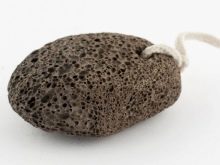


Varieties
Thanks to the development of modern technologies, pumice is not only natural but also synthetic. Each type of material has its own characteristics and differences, the knowledge of which allows you to make the right choice of pumice bar for treating heels or pedicure. Natural mineral is considered durable and practical.
It is bought in the event that there is a predisposition to allergies. It is environmentally friendly, practical and convenient to use.. Compared to its synthetic counterpart, it has a greater porosity and resistance to crumbling. When using it, there is no irritation and damage to the skin.

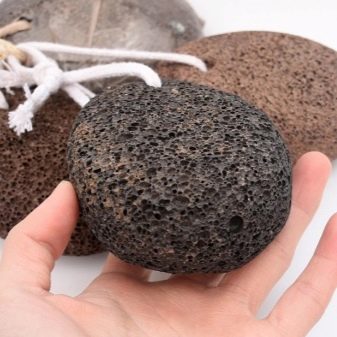
Natural pumice is resistant to abrasion, it is recognizable by its characteristic natural tones, while the artificial counterpart can be painted in an unnatural color. To treat the rough skin of the heels, they try to buy pumice stones with a fine abrasive, since a large-pore volcanic stone can injure the skin. However, such a foot product has a significant drawback: it absorbs moisture and dries for too long. Because of this, the possibility of colonization of the bar with microbes is not ruled out.
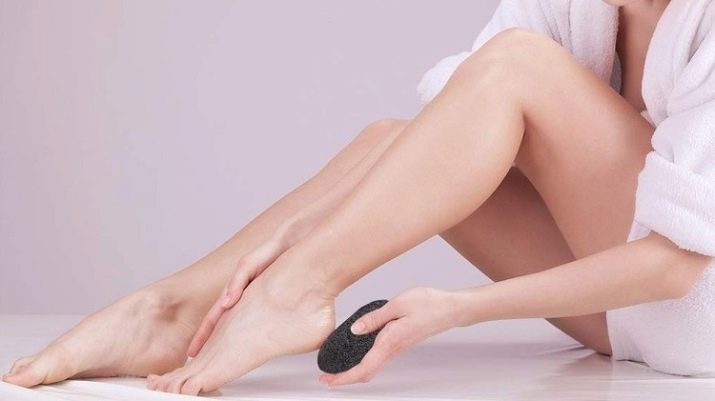
Artificial stone is created by a special technology using a slag substance.. This pumice stone has many advantages. Compared to natural rock, it is cheaper and more resistant to moisture absorption. In addition, it is inert to the formation of a microbial environment. The disadvantages of artificial stone are strong crumbling and heavier weight. In addition, such pumice is more dangerous to use, since it can injure the skin during the removal of dead cells. Its production is carried out at metallurgical plants.
Pumice stone for feet can also be classified according to the type of execution.It is standard mechanical and electrical. The usual universal version can be presented in the form of a bar, handle or spatula.
The electric variety is a device that runs on mains or batteries. It works due to the torsion of the working surface at high speed.


What are they made of?
In the production of artificial pumice, different raw materials are used. The final product is characterized by closed pores. Cleaning sticks of artificial origin are made from polymers that are resistant to swelling and loss of shape. However, when the skin is injured, inflammation is not ruled out. In addition to polymers, diamond chips are used in the manufacture of artificial pumice. Such material is considered elite and is used for pedicure in professional beauty salons. Glass can also become an abrasive substance of the composition, thanks to which it is possible to quickly get rid of the rough skin of the heels.
The abrasive substance of a synthetic stone can be coal or sapphire. In addition, pumice stone can be made from laser-cut metal. Such a tool is effective in removing corns, cracks, dry calluses. Such products differ in varying degrees of rigidity. Wherein for regular use, models with an average level of rigidity are suitable.



Criterias of choice
To buy a really good option for heel treatment, you need to consider a number of nuances. This mineral is sold in pharmacies, as well as in specialized cosmetic stores. It is presented in the widest range. For example, if you wish, you can purchase a natural bar, Thai pumice, a metal grater with laser sharpening or a roller brush.
However, not everything that is found on the shelves is worthy of choice, because both the composition and abrasiveness of volcanic stone are very different. A porous glassy mineral of synthetic origin has rather sharp edges, so you need to take a stone with an optimal pore size for processing keratinized cells. Ease of use is also important, which is determined by “fitting”.

It is more convenient for someone to use a bar, others prefer models with handles. The second options are more convenient because they allow you to process keratinized skin in hard-to-reach places (for example, in areas between the fingers). Size is important: the product must be comfortable in terms of use. As for the choice between natural or synthetic pumice, it is worth considering: natural rock is considered the best tool with a long service life. Artificial stone should be changed frequently. When buying, you need to rely on the size of the pores themselves: the smaller they are, the more gentle the exfoliating effect.
For these needs, you need to buy natural pumice stone, created in a natural way. It will not crumble during exposure to the feet and will not harm health, as it is suitable even for allergy sufferers.
At the end of the manipulations, the pumice stone should be washed well and dried. So germs will not start in it, and it will last much longer.

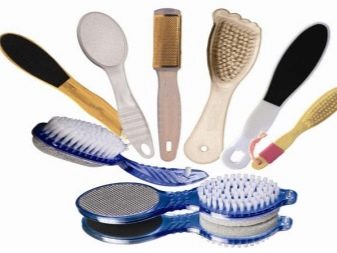
How to use?
The negative reviews associated with the aggressive effect of pumice on the treated areas of the skin are due to the improper use of a useful volcanic stone. It is necessary to clean her heels at home correctly, observing a number of simple nuances. Few people thought about the fact that pumice cannot be used dry. Do not rub dry feet with it, hoping for high-quality and safe use. It effectively removes rough dead skin of the heels in the event that if before the cleansing procedure, steam your legs in hot water. At the same time, herbal decoction, sea salt or starch can be added to the water.
Steaming will make the exfoliation process more gentle and supple. It is advisable to steam your feet in the bath for about 20-30 minutes, not forgetting to add hot water. Feet should be clean and slightly damp at the time of treatment. Before treating the feet, you need to dry your feet with a towel and disinfect the treatment areas. Do not try to remove the skin from the soft areas of the feet. Pumice is not intended for the treatment of such areas; it removes the stratum corneum of the dermis without effort. During the treatment, it is necessary to rinse the instrument used frequently, as it will be contaminated by the removed dead skin cells.
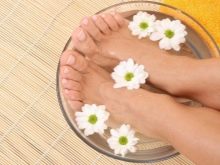


You can not rub a volcanic stone into the skin. Hand movements should be circular, light and delicate. Otherwise, you can touch the sensitive layer of the skin, causing irritation and pain. Linear movements lead to the formation of traumatic furrows. At the end of the manipulations, it is necessary to rinse the feet with clean water of an acceptable temperature. After that, you can apply a nourishing cream to the skin, choosing a product with a vitamin complex or a calming effect, and put on socks. You can not continue the procedure when a burning sensation appears and rub the bar on your feet for too long.
In addition to the basic rules, it is important to consider: pumice cannot be used daily. Not only will this not give an ideal result, but it will also provoke the appearance of open wounds, which will delay the use of the mineral stone for a long time.Often such procedures are not done even if a bar with a fine abrasive is used, which gently exfoliates keratinized skin. The frequency of procedures depends on the type of problem. For example, if you need to get rid of corns, pumice is used until the skin of the heels becomes soft (but not every day).
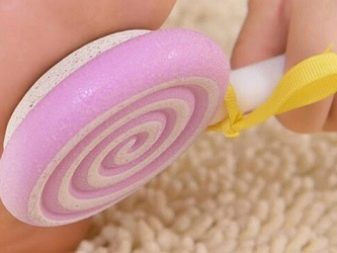

For preventive purposes, it is possible to treat the keratinized dermis no more than 1-2 times in 7-10 days. The course usually does not exceed 2 weeks, after which a short break is necessary.
However, the desired effect is not always achieved after the first procedure. Matte skin of the heels acquires after several procedures (3-4). As soon as the efficiency decreases noticeably, the pumice must be replaced with a new one. You can not use it with sensitive and thin skin of the feet. To get rid of the yellowish tint of the roughened dermis, a little hydrogen peroxide is added to the water in the bath.
As for the use of an electrical device, they are used exclusively on dry skin. The device is connected to the network and passed with delicate movements along the problem areas of the feet. Caring for natural stone also consists in disinfecting the bar. For this purpose, boiling water and hydrogen peroxide are used.

What can be replaced?
A large part of buyers consider pumice stone to be an outdated heel treatment. It is replaced with special metal scrapers. However, as practice shows, not all substitutes are as harmless to the skin as natural pumice. They have to be used with caution, since these devices often injure the treated area.
Among the products in demand among buyers, one can note double-sided brushes made of rubberized plastic, having two abrasives of different pore sizes on opposite sides.Ergonomically shaped roller electric files, foot graters with special grinding plates have also proven themselves well. The latter devices are equipped with a compartment for collecting the scraped dermis.

For information on how to choose the right pumice stone for your feet, see the following video.






















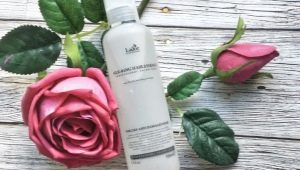





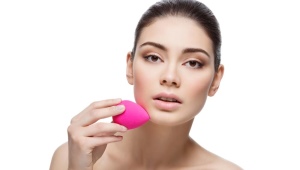
When using pumice, you must remember that first you need to properly soften the corns. Only after that you can rub your heels and feet.